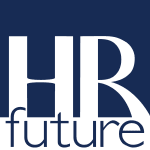Effective workforce management is essential for HR professionals striving to enhance productivity and streamline operations. With businesses increasingly relying on HR automation software, manual scheduling and tracking methods are becoming obsolete. Automation not only optimizes employee scheduling but also reduces administrative burdens, ensuring smooth workforce operations. Implementing the right HR technology solutions, such as apps for tracking employee hours, allows organizations to manage staff efficiently, improve compliance, and foster a more engaged workforce.
The Challenges of Traditional Workforce Management
Traditional workforce management systems often come with inefficiencies such as overstaffing, absenteeism, and scheduling conflicts. HR teams struggle with tracking employee hours manually, leading to payroll discrepancies and compliance risks. Without automated HR tools, managing time-off requests, shift planning, and workforce analytics can become overwhelming. These challenges highlight the need for an employee scheduling software that simplifies processes and ensures workforce efficiency.
How Automation Transforms HR Processes
Integrating HR automation software into daily operations streamlines workforce management by reducing errors and improving decision-making. Automated shift planning software eliminates scheduling conflicts, while real-time tracking helps monitor employee attendance. Moreover, digital workforce solutions provide predictive insights, allowing HR teams to forecast staffing needs effectively. By leveraging recruitment management software, businesses can also enhance hiring processes, ensuring optimal workforce allocation.
Automation not only optimizes employee scheduling but also reduces administrative burdens, ensuring smooth workforce operations. Implementing the right HR technology solutions, such as apps for tracking employee hours, allows organizations to manage staff efficiently, improve compliance, and foster a more engaged workforce.
Key Features of Workforce Management Software
A robust workforce management system includes essential features such as:
- Shift Scheduling – Automates employee shift assignments to prevent conflicts and enhance efficiency.
- Leave Management – Simplifies tracking of paid time off, sick leaves, and vacations.
- Attendance & Time Tracking – Ensures accuracy in payroll and compliance with labor laws.
- Employee Engagement Tools – Provides analytics to monitor performance and satisfaction.
- HR Automation Software Integration – Syncs with payroll and other HR systems to reduce manual work.
These tools help businesses improve HR efficiency, saving time and minimizing administrative workload.
Best Practices for HR Professionals
To successfully implement HR automation software, HR professionals should follow these best practices:
- Choose Scalable Solutions – Select an employee scheduling software that adapts to your company’s growth.
- Leverage AI-Powered Insights – Use digital workforce solutions to predict workforce trends and optimize scheduling.
- Enhance Employee Communication – Ensure staff stays informed through automated HR tools that facilitate real-time updates.
- Monitor Key Metrics – Track workforce management system analytics to assess efficiency and improve decision-making.
By implementing these strategies, businesses can foster a more organized and responsive HR environment.
Conclusion & Next Steps
Adopting the right HR automation software is key to optimizing employee scheduling and ensuring smooth workforce operations. By integrating automated HR tools into daily processes, HR professionals can improve compliance, enhance team collaboration, and reduce administrative tasks. Investing in a workforce management system allows businesses to focus on strategic growth rather than manual HR complexities. Take the next step in HR technology solutions and transform your workforce management today.
Guest writer
























